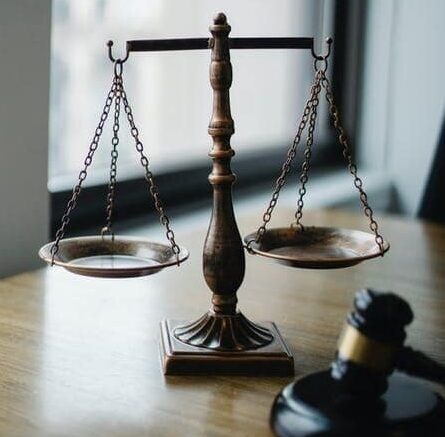Have you ever found yourself struggling with a stubborn drain or a leaky pipe? When plumbing issues arise, they can cause significant distress. This is why deciphering the complex world of plumbing is essential.As a homeowner, knowing basic plumbing services can save you from catastrophic water damage and hefty repair bills. You don’t have to be a professional to understand some vital elements of this field.Let’s delve into ‘Plumbing Services 101: Cracking The Code’, giving you a firm grasp over common plumbing problems and their efficient solutions. Don’t let any leaks catch you off guard!
Common Plumbing Issues
Plumbing challenges can appear unexpectedly. This overview highlights typical water heater concerns and outlines solutions. Address issues promptly to prevent larger disruptions in your home.
Why is my Water Heater Leaking?
Possible leak sources include loose fittings, corroded tanks, or malfunctioning temperature and pressure relief valves. Nearby plumbing leaks might mimic heater issues. Address them promptly.
What Causes Cold or Cool Water in my Heater?
Common causes include defective heating elements, incorrect thermostat settings, or pilot light complications. These factors lead to cold water from your heater rather than warm.
Why is the Water from my Heater Discolored?
Cloudy or tinted water frequently indicates corrosion within the tank or bacterial growth. Consult a professional promptly to diagnose these issues and avoid long-term damage.
Why does my Water Heater Make Strange Noises?
Unusual sounds may originate from sediment accumulation, slack components, or a failing heating element. Periodic flushing and inspection help prevent noise-related malfunctions in this appliance.
What Causes Pilot Light Issues?
Malfunctioning pilot lights often stem from faulty thermocouples, blocked pilot orifices, or compromised gas flow. Address these concerns swiftly to ensure uninterrupted overall heater performance.
How to Ensure Regular Maintenance?
Frequently examine connections, valves, and the tank for damage or rust. Routine checks can consistently preempt costly repairs and keep your heater functioning most optimally.
When to Seek Professional Assistance?
Contact professionals for complex tasks like swapping T&P valves, changing heating elements, or replacing the entire tank. Skilled expertise ensures safe repairs for lasting results.
Essential Tools Overview
A pipe wrench is a primary tool for gripping and turning fittings or pipes. Frequently, pairs of wrenches address varied tasks across different plumbing jobs.
Pipe Cutter and Hacksaw
Pipe cutters and hacksaws deliver precise cuts for copper, PVC, or other pipes. Choose your tool based on the material and the task’s exact requirements.
Utility of Plungers and Adjustable Wrench
A plunger quickly clears obstructions due to its simple design. Meanwhile, an adjustable wrench tightens or loosens hexagonal nuts, proving indispensable in many plumbing fixes.
Basin Wrench and Plumber’s Torch
The basin wrench’s unique shape accesses tight spots, making sink installations easier. A plumber’s torch delivers targeted heat for soldering pipes and ensuring watertight seals.
Pliers, Tape and Faucet Key
Pliers handle stubborn bolts, while thread sealing tape prevents leaks at connections. The faucet key offers quick access to spigots and sillcocks during maintenance tasks.
Inspection and Press Fitting
Inspection cameras reveal clogs or structural issues within pipes. Press-fitting tools then secure reliable connections quickly. Using both enhances project efficiency and reduces disruptive downtime.
Flashlight and Bucket
A flashlight illuminates dim spaces, allowing accurate repairs. Meanwhile, a bucket catches drips or runoff. Keeping both accessible can halt minor hassles from escalating quickly.
Drainage System Basics
Drainage systems carry waste and used water away from fixtures toward a main sewer line or septic tank. Efficiency hinges on proper design and maintenance.Each fixture connects to a designated drain line. Used water travels through these lines, relying on gravity, before entering the property’s core drainage network.Sloped drain lines prevent standing water, ensuring flow. Ultimately, these lines connect to a municipal sewer or a septic tank, depending on your property’s infrastructure.
| Type |
Features |
Uses |
| Agricultural Drainage System |
Includes tile drains, surface ditches, and subsurface drains. |
Improves soil conditions and prevents water logging to promote better agricultural output. |
| Subsurface Drainage System |
Underground system involving perforated tiles or pipes. |
Drains surplus water from soil effectively, keeping the area dry. |
| Flood Control Channels |
Large basins that collect stormwater runoff temporarily. |
Avoids flooding downstream by storing water during storms and directing it into the drainage system later. |
| Combined Sewer System |
Utilizes the same pipes for wastewater and rainwater runoff. |
Collects water from businesses and homes; however, these systems can overflow during high rainfall, causing sewage release. |
Vent pipes sustain air pressure within drain lines, and accelerate water flow. They protrude through the roof, blocking animal entry while allowing unimpeded essential airflow.Gravity-fed designs transfer water efficiently from one area to another. Natural or artificial slopes channel water downward, offering overall service with minimal mechanical intervention.Eventually, water enters a catch basin, which traps debris and silt. This setup effectively keeps unwanted harmful materials from traveling into the broader drainage infrastructure.
Pipe Repair Methods
Various pipe restoration methods target different damages and materials, delivering repairs for your plumbing. Choosing the proper method ensures durability and efficiency in each fix.
Cured-in-Place Pipe Lining
Resin-saturated liners are introduced into old pipes, then inflated and hardened. This process creates a seamless internal layer that significantly restores functionality without extensive excavation.
Pipe Bursting
A powerful bursting head passes through the entire old pipe, fracturing it. Simultaneously, a fresh pipe is pulled into place to replace the shattered structure.
Slip Lining
A narrower pipe slides inside the deteriorated line, with grout locking it in place. This is often effective for minor damage, avoiding costly significant excavation.
Pipe Patching
Damage is sealed with a patch or sleeve placed over the compromised area. This watertight barrier effectively extends pipe longevity, postponing significantly necessary large-scale replacements.
Welding
Welded joints mend small leaks or cracks by fusing metal sections. This technique is very common and practical for minor pipe damage, quickly restoring integrity.
Sleeving
A durable sleeve covers corroded or weak sections, reinforcing the pipe’s exterior. This tactic addresses localized weaknesses without requiring extensive replacements or invasive tasks.
Clamping
Metal clamps enclose leaks to strengthen damaged areas. Although typically short-term, this method buys time for proper assessments and permanent fixes in urgent plumbing scenarios.
Horizontal Directional Drilling
Horizontal drilling bores an underground path for new pipelines, significantly reducing surface disruption. This approach is ideal for congested urban zones requiring minimal excavation impacts.
Water Heater Tips
Regular upkeep extends a heater’s life. Keep its surroundings uncluttered for unobstructed ventilation and safety. Simple measures often prevent performance issues and lengthen operational reliability.Knowing how to shut off the water supply helps during emergencies. Record your heater’s model and serial numbers; details assist professionals if service becomes necessary.
- Drain and flush the tank: Regularly emptying the unit removes sediment and reduces corrosion threat.
- Test the pressure relief valve: Checking this valve routinely safeguards against unsafe pressure buildup.
- Replace the anode rod: Examine frequently, swapping it out when corrosion appears to protect the tank from internal wear.
- Check the thermostat and valves: Confirm correct temperature settings and ensure components function properly for consistent hot water supply.
Perform daily checks for leaks near the heater and track temperature fluctuations. Such routines significantly avert potential breakdowns and further preserve overall operational efficiency.Keep household water at or below 120°F to promote safety and energy savings. Consistent maintenance and attentiveness ensure your heater remains reliable for many years.
Preventive Maintenance Steps
A systematic plan underpins preventive care. Start by enumerating each maintenance necessity for your assets, ensuring no critical tasks are overlooked or postponed.Next, develop thorough procedures outlining each required task in clear detail. This blueprint secures consistent performance across equipment and significantly fosters overall system harmony.
- Develop a Maintenance Schedule: Base intervals on manufacturer advice and expert insights. Regular servicing minimizes costs, averts breakdowns, and sustains steady functionality.
- Establish Performance Targets: Define goals, set benchmarks, and use tangible KPIs. These indicators spotlight progress and highlight areas demanding further enhancement.
- Implement a CMMS System: A digital solution organizes tasks, work orders, and fosters team collaboration. This platform centralizes records and streamlines your entire maintenance workflow.
- Invest in Training: Ongoing skill development readies staff to execute preventive tasks effectively, reinforcing safe and efficient maintenance practices.
Continuous oversight and periodic updates are vital. Evaluate your plan frequently, correcting shortcomings and reinforcing stronger maintenance strategies to significantly enhance overall long-term outcomes.Finally, asset audits reveal past upkeep, guiding resource allocation. Prioritize equipment by safety implications and production value to ensure the greatest benefit from maintenance efforts.
Emergency Repair Advice
Unforeseen problems strike homes at any time. These may include burst pipes inundating interiors or structural damage threatening collapse. Swift action reduces harm and expense.
Immediate Need
Urgent fixes shield residents and property from hazards. Delaying them endangers safety and compounds damages. Burst pipes, leaking roofs, or electrical faults require immediate action.
Maintenance as Defence
Routine upkeep fortifies your home against crises. Strong plumbing reduces problems. Yet, a maintained residence faces issues. Stay vigilant for leaks, clogs, or weather damage.
Emergency Repair Types
Frozen or burst pipes disrupt water supply and may flood interiors. Leaking roofs escalate into issues. Prompt professional intervention prevents structural harm, limiting repair bills.
Addressing Emergency Repairs
Keep written records when informing landlords of problems. Detail each issue and its effects. Landlords must maintain habitable conditions, handling emergencies within 24 hours.
Master Your Plumbing
Through understanding common issues, essential tools, drainage systems, pipe repair methods, water heater tips, preventive maintenance steps, and emergency repair advice, you can tackle your plumbing challenges. Look for more knowledge here. Navigate plumbing with confidence from now on!




